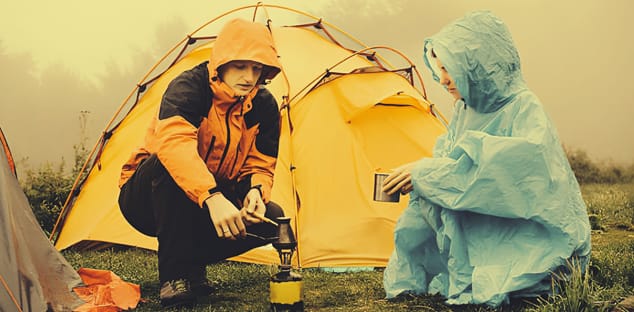If you only have a tarp and need to stay dry while camping overnight in the rain, it’s definitely possible with the right setup and techniques. Here’s how to maximize your chances of staying dry:
🏕️ 1. Choose Your Campsite Wisely
Avoid low ground where water collects (like valleys or gullies).
Look for slightly elevated, flat ground with good drainage.
Avoid pitching under dead branches (widowmakers) or trees likely to drop water constantly.
🛠️ 2. Set Up a Proper Tarp Shelter
You’ll want a shelter shape that sheds water and protects you from wind. A-frame or lean-to are common options, but the A-frame is best for rain.
🏗️ A-Frame Tarp Shelter (Best for Rain)
Tie a ridgeline (rope or paracord) between two trees.
Drape the tarp over the line to make a tent shape.
Stake out the corners tightly and angle the sides steeply to let rain run off.
Make sure the sides go low enough to prevent wind-driven rain from entering.
Use rocks or logs to weigh down edges if you lack stakes.
🧥 3. Ground Protection
Lay down a ground tarp or plastic sheet under your sleeping area.
Make sure it’s smaller than the tarp roof so rain doesn’t collect and run under it.
If you don’t have an extra tarp or groundsheet, pile dry leaves, pine needles, or boughs as insulation and separation from wet ground.
💨 4. Angle and Ventilation
Pitch one end lower or closed to block wind and rain.
Keep an opening for airflow to reduce condensation inside.
🔥 5. Extra Tips
Use a rain poncho or garbage bag for extra rain protection if you need to move around.
Keep gear off the ground by hanging it or placing it on rocks/logs.
Sleep on an insulating layer if possible (clothes, dry leaves, foam pad).








